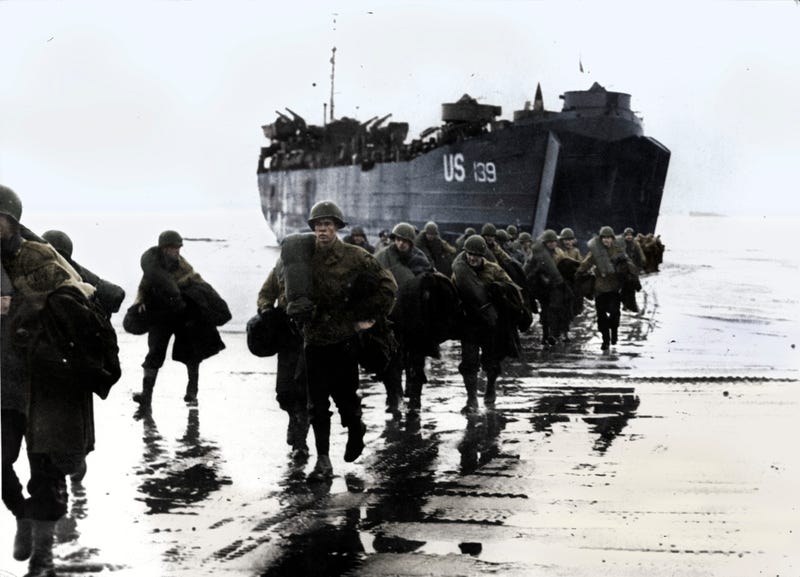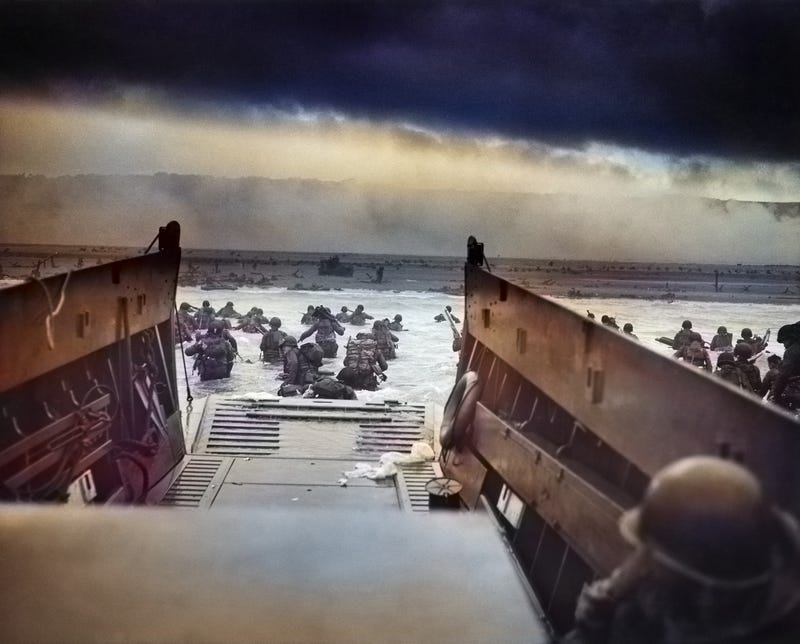
NEW YORK (1010 WINS/WCBS 880) – As the world marks the 80th anniversary of D-Day on Thursday, WCBS 880 revisits a 2004 interview with the legendary CBS News correspondent Richard C. Hottelet, who flew aboard a B-26 bomber over Utah Beach during the Allied invasion of Nazi-occupied Normandy, France—a military operation of unprecedented scale that changed the course of World War II, and history.
Hottelet, who died at 97 in 2014, was the last of the “Murrow Boys,” Edward Murrow’s team of journalists known for their WWII coverage. He was the first CBS correspondent to broadcast an eyewitness account of the Allied landing at Normandy on that fateful day on June 6, 1944.
In his interview, Hottelet told WCBS 880’s Sean Adams of the scene he witnessed flying on a B-26 over the English Channel: “It was an incredible sight. That whole area was full of ships, big ships, small ships; some of them moving quickly, and leaving their wakes. Some of them just sitting there, but firing. Billowing smoke. The sound was incredible. I’ve never—I mean, the word armada doesn’t begin to touch what it was like. And well we were part of the operation, a small group of planes heading for what was Utah Beach on the Normandy Peninsula, the Cherbourg Peninsula. And it was a bird’s eye view of the impossible and the unthinkable.”
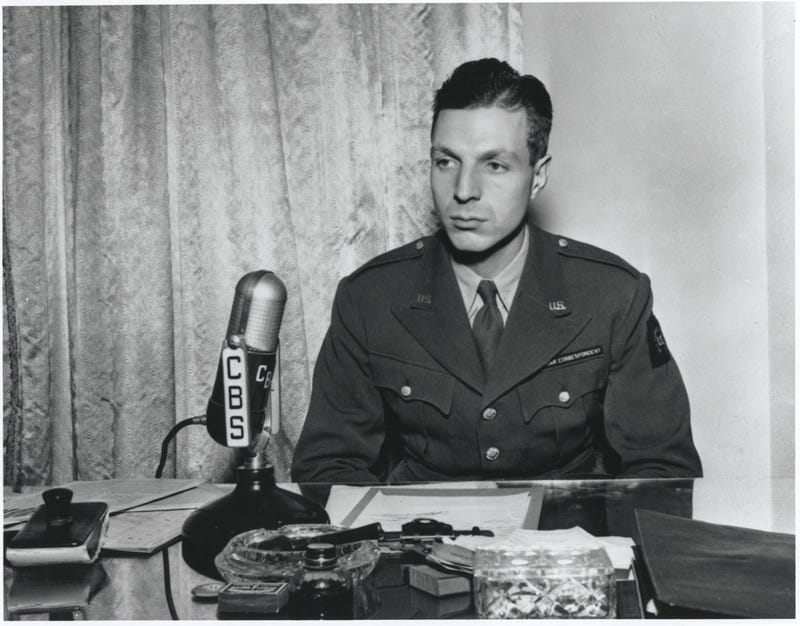
“The beach was quiet,” Hottelet recalled as the plane flew in at a low—and risky—4,500 feet due to heavy cloud cover. So precarious was that altitude that “we took off our flak jackets and put them on the floor of the plane, so stuff coming through the floor of the plane wouldn’t hit us.”
“We were among the last—we were probably the last—formation to go. And whatever Germany antiaircraft power there had been would have been silenced by then. There were just these occasional shots, these little puffballs to one side. Looking down, the beach was empty, but off to our left we saw the first speedboats coming in with the troops that were landing in Utah.”
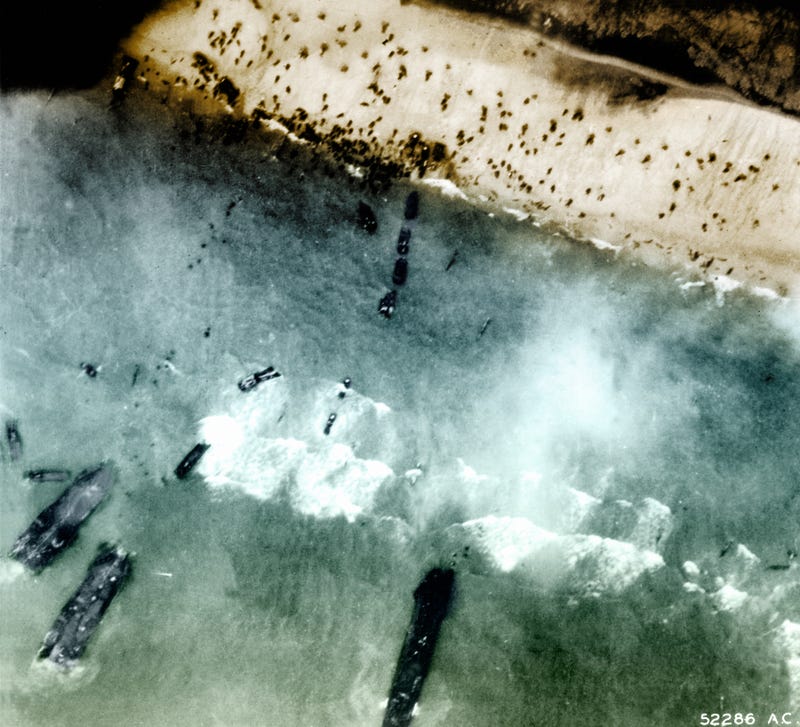
The B-26 that Hottelet rode in was nicknamed the “flying prostitute” because it had “no visible means of support, it had very short, stubby wings.”
“Taking off was a bit dramatic,” he remembered, “because we were fully loaded—bombs, gas.” And it took a while to get off the ground. It took them all a little while to get off the ground.”
“Until you were off the ground, you were biting your fingernails,” he said, adding his anxieties subsided when airborne. “Once you were up in the air, joined up with the others, you were one of a crew, one of a team. And it takes a lot of the personal drama out of it. You’re not alone doing anything. You’re a part of a group of people, all of whom face the same problems, doing the same thing, taking the same risks. So you don’t feel nervous, really.”
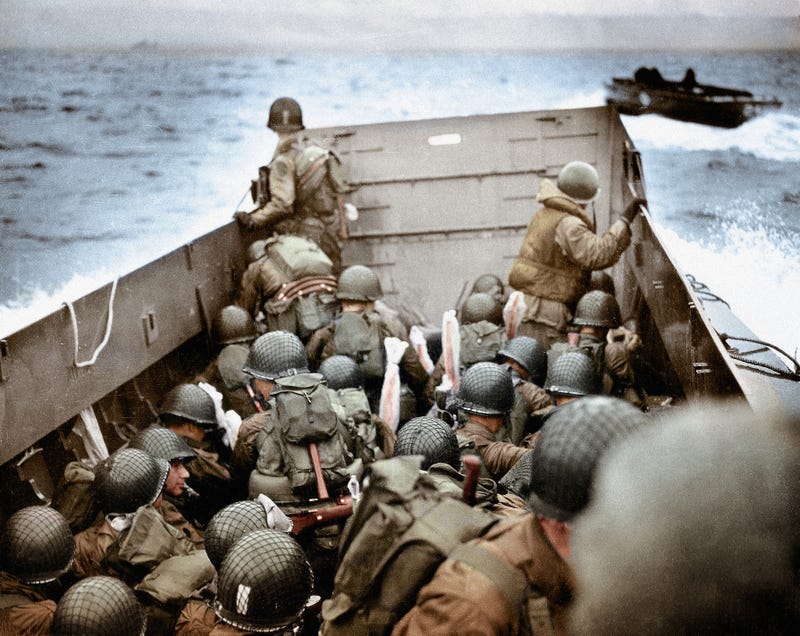
Indeed, it was a team effort on a massive scale—more than 2 million Allied soldiers, sailors, pilots, medics and other people from a dozen countries were involved in the battle to wrest western France from Nazi control, an operation dubbed Overlord that started on D-Day.
Nearly 160,000 Allied troops landed in Normandy just after dawn that day, including 73,000 Americans, to face around 50,000 Germans. The Allies targeted Utah and four other code-named beaches: Omaha, Gold, Juno and Sword. Further inland, thousands of paratroopers dropped onto German sites.
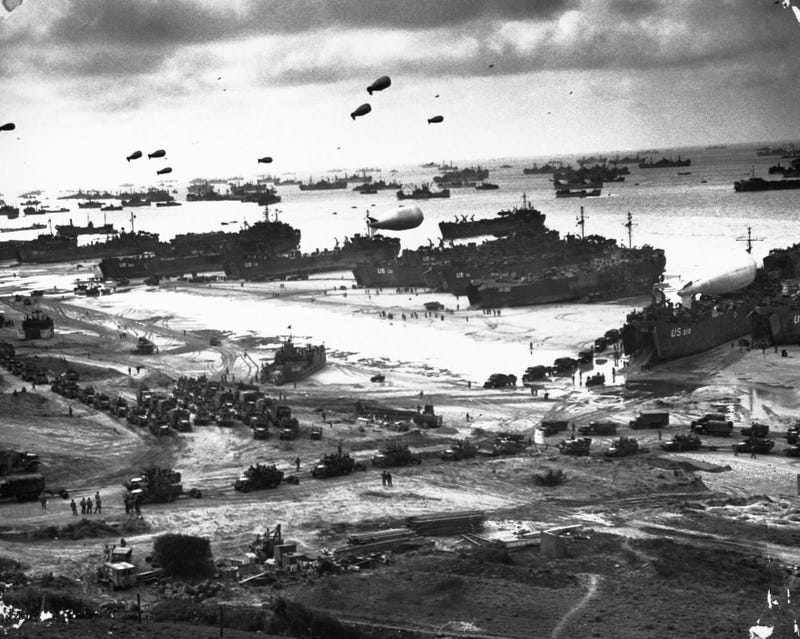
Asked if he had a sense at the time that he was witnessing history, Hottelet said it was hard to process thoughts in the intensity of the moment. “It was just a sense of satisfaction,” he said.
“I didn’t sort of say, ‘Well, here I am on D-Day at the cusp of history.’ No, it was just a very satisfactory journey, and a very interesting one.”
While the operation changed the course of the war, it came with a heavy cost: 4,414 Allied troops were killed on D-Day itself, including 2,501 Americans. In the ensuing Battle of Normandy, 73,000 Allied forces were killed. More than 150,000 were wounded. On the German side, an estimated 4,000 to 9,000 soldiers were killed. The Allied bombing of French towns and cities left around 20,000 French civilians dead.
